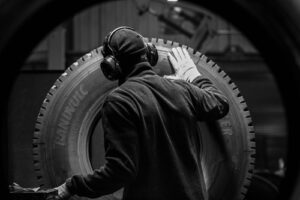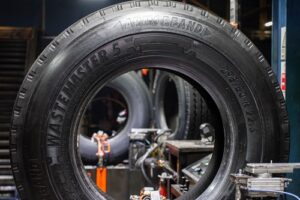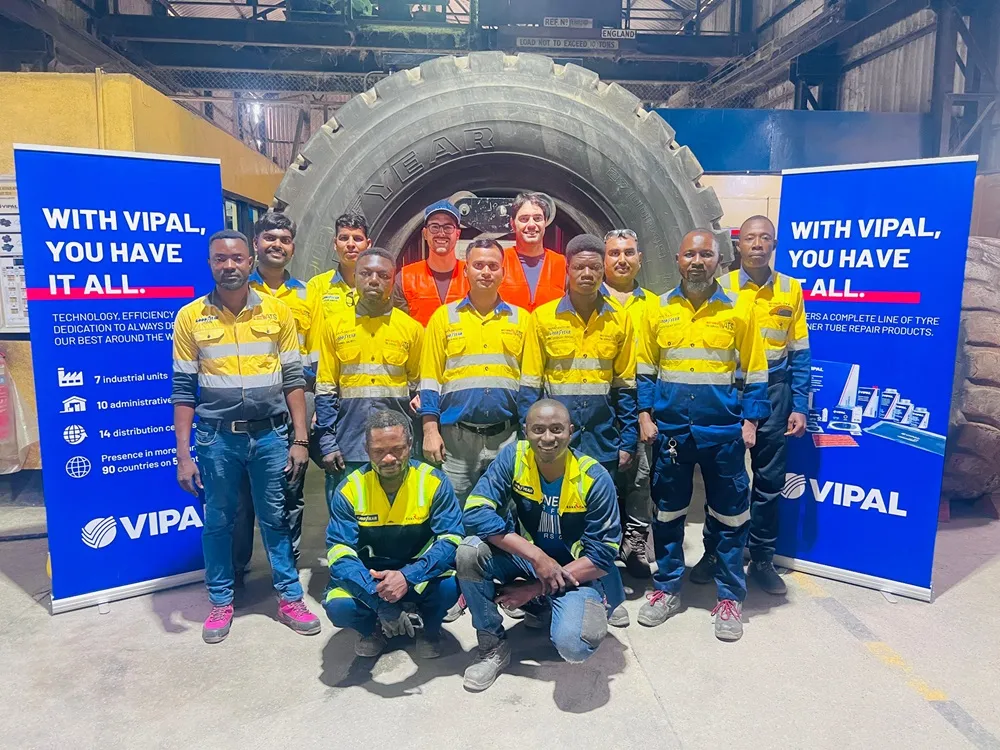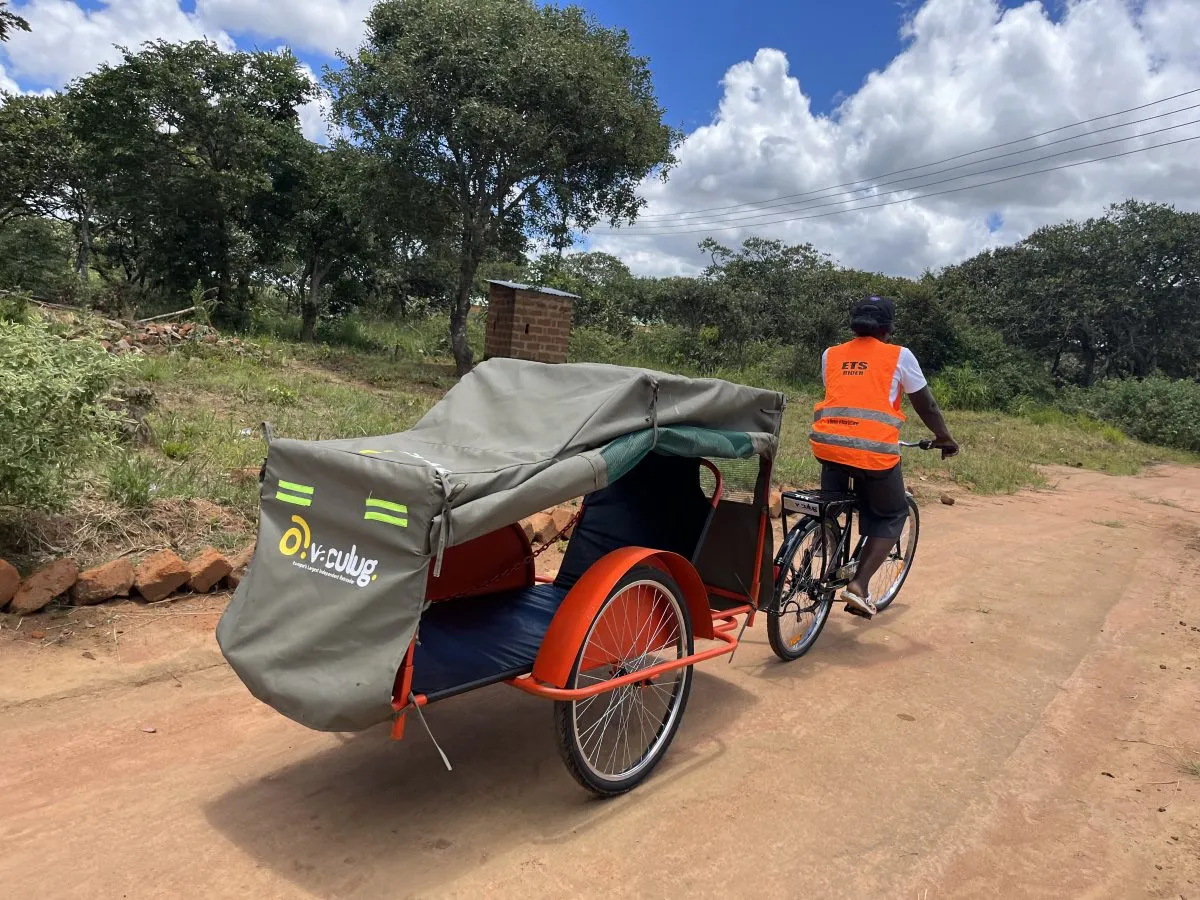In our recent analysis of Continental’s van tyre offer, Ralf Benack, Head of Fleet Solutions EMEA for Continental spoke glowingly about the potential that could lie ahead for retreading in the last mile delivery sector of the commercial mobility market despite a number of key challenges. During the company’s recent launch of their new Generation 5 range of truck tyres in Seville, Benack also opened up on other matters concerning the retreading industry. Two of Continental’s retread plants report directly to Benack, in addition to which there are several pre-cured retreading plants in which he has a direct involvement.
Ralf Benack, Head of Fleet Solutions Talks Retreading
To recap the retread-related discussion regarding Continental’s latest van products, VanContact Ultra and A/S, Benack explained that he did see good opportunities for van tyre retreading due to the quality of the casing but underlined the complex business conditions that it faces. “We see a big opportunity with van retreading. The history and perception of retreading gets worse the closer you get to passenger retreads, so it is going to be a process.”
He added, “Retreading van tyres is not a simple matter. From a technical perspective it is easy, but it is a different challenge as it has similar production costs as a truck tyre, but the van tyre costs much less than a truck tyre. That being said, we are looking at it closely from a technology standpoint as well as passenger car retreading as we sincerely believe in the life cycle solution of our tyres.”
With cost pressures only increasing across the board from fuel prices to raw materials to drivers’ salaries, there appears to be an opportunity to really promote and push retreading as a cost-saving exercise that doesn’t compromise on quality, but also helps truck fleets fulfill sustainability goals. Benack expands, “There is certainly a big opportunity to push retreading forward with truck fleets due to the cost pressures we are seeing. Life cycle concepts are becoming more prominent, with the customer realising that the benefits of retreading are two-fold. On the one hand, it is a cost saving exercise, and on the other it really helps your sustainability footprint.”
The sustainability aspect is a key focus for Continental as the company reports that when retreading a tyre, the manufacturer is able to reuse around 70% of the original tyre, saving raw materials, water and energy. After this, there is the aforementioned cost aspect with retreads being cheaper than new tyres but additionally delivering on safety and durability.

Further to this, with carbon dioxide regulations for HGVs coming into the mix, meaning CO₂ emissions will need to be cut from new heavy-duty vehicles by 15% by 2025 and by 30% by 2030 compared to 2019/2020, the European Commission created a simulation tool called VECTO — short for Vehicle Energy Consumption Calculation Tool. The tool measures performance data to measure fuel consumption for certain vehicle configurations, and if truck manufacturers fail to comply, fines can be issued for each vehicle, which has meant the tyre manufacturers have had to step up their efforts even further in the sustainability charge with their new tyre development. It is also expected that these regulations will be expanded to include fleet operators before long as well. What does all this mean? It yet further underlines the importance of how a quality retread policy can help fleets and the OEMs deliver on cutting emissions and reaching their sustainability goals by improving the quality of retreads when it comes to fuel consumption, but also reducing the use of new raw materials.
Benack added, “we are getting asked more and more by our customers and their customers are asking them (the fleets and fleet operators) what they are doing to operate more sustainably. We have many fleets that help us to show customers our contribution to a sustainable operation. With our data collection it helps them to support their business from the point of view of “I need to utilise my assets.”
Additionally, he explained how a retreading policy really gives fleet operators more of a mid-term perspective on how they can get the most out of their new tyres thanks to not only to the quality of the Continental casing but also the service offerings the manufacturer has too.
Further to this, Continental’s LODC (Lowest Overall Driving Cost) approach plays key a role in the cost pressure drive that we are experiencing in 2022 with the manufacturer always striving to select the appropriate retread application whether that is hot-retreaded ContiRe or cold-retreaded ContiTread tyres. This LODC approach with Continental’s retreading solutions can feasibly reduce a fleet operator’s tyre costs by 30 to 40 percent.

The question surrounding price vs quality has always been one that has plagued the retreading industry for years and on a wide level the image associated with recycled products against new ones has usually been one of inferior quality. This is a generalisation that Benack sees is changing, “At Continental we really work on the image of retreading. I also think that when you look at many industries with recycled products, why does it need to be cheaper than a new product. Sometimes the recycling brings upgrades, and that understanding of having something cheap when it is recycled or reused is something we need to address. If you want technology and an end-to-end solution you cannot expect this type of attitude.
“This is where our lifecycle solutions and digital solutions come into play to give more exposure and understanding. These will be the players that are involved in any crisis and, with a recession looming, it can certainly help fleets rather than just focusing on cash flow.”
Whilst there are opportunities ahead and reasons to be optimistic, the issue of the anti-dumping and anti-subsidy tariffs against Chinese TBR imports, which were recently annulled in 2022, has opened up the potential for floods of imports from China, which can only be seen as a bad news story for the retreading industry. Truth being told, though, with Chinese manufacturers being very flexible and adept at shifting their manufacturing bases to other countries in Southeast Asia to combat the original tariff situation, the impact of annulling the tariffs is questionable. Benack had his own thoughts on the situation, “We haven’t seen much difference in the market following the recent cancellation of the tariffs against Chinese new tyres. Once the tariffs were originally implemented, the Chinese tyre manufacturers were pretty quick at shifting their production. We saw that their imports were down one year and then the next year they were up again.”
Benack then returned to the topic of sustainability and Continental’s LODC approach and how it can help retreaders and retreads combat the argument of cheap tyres against retreads. He explained, “Looking at retreads, there has been pressure on the sustainability argument, which might have been a marketing ploy in the past but more and more fleets now are getting asked by their customers to prove that they are operating sustainably, which is not what a cheap Chinese tyre does. I am convinced that as a result of this collaborative approach with the LODC idea, customers will learn more and more about these values as it will make their life easier.”







